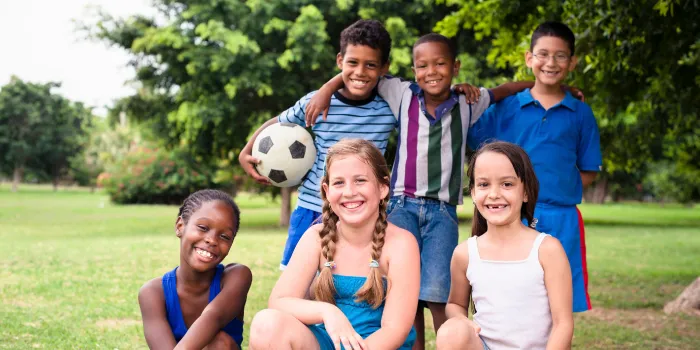Summer camp is a time of freedom, exploration and fun. But for families who have children with bleeding disorders such as hemophilia or von Willebrand disease, going away to camp also comes with a number of safety considerations. On top of that, camp organizations are also working to implement COVID-19 safety guidelines this year as they plan to offer in-person programs for the first time since the pandemic began.
So what can you and your family expect this year when attending a bleeding disorders camp? Several organizations have put out guidelines on how to operate a camp safely during the pandemic, and your local camp will probably adopt similar measures.
What to Expect at a Hemophilia Summer Camp in 2021
The Centers for Disease Control and Prevention released its “Guidance for Operating Youth and Summer Camps During COVID-19,” which outlined a comprehensive overview of recommended protocols, including:
- Universal use of masks that cover the nose and mouth
- Having camp staff get vaccinated when eligible, and encouraging campers to do the same
- Increasing ventilation for indoor activities
- Physical distancing
- Encouraging frequent hand-washing
- Developing an emergency operation plan in the event that someone has symptoms or tests positive for COVID-19
- Staggering use of shared spaces
- Having meals outdoors
The Association of Camp Nursing has also provided a field guide for camps on how to implement CDC guidance, as did the American Camp Association.
Pacific Northwest Bleeding Disorders camp
The Pacific Northwest Bleeding Disorders (PNWBD) chapter is currently planning to offer an in-person camp experience at Camp Myrtlewood this year, barring the county’s return to “extreme” risk status, designated by the state of Oregon.
“We have to be rigorous with an overnight, longer-term event,” says Madonna McGuire Smith, PNWBD’s executive director. “There’s that potential sustained exposure to COVID.”
To promote a safe camping experience, Smith and the organization are making decisions based on guidance from several organizations, including the CDC, the Association of Camp Nursing, the American Camp Association, the Oregon Health Authority, NOLS, and the Oregon Health & Science University.
The Oregon chapter will offer a virtual, three-day youth camp, followed by a three-day in-person family camp a week later. The organization made significant changes to the in-person family camp’s normal operations in an effort to keep all participants healthy.
PNWBD’s three-day, two-night family camp will take place from August 6-8. The camp will still offer family-friendly activities, but this time the organization added extra safety precautions for COVID-19; ones you might see at your local bleeding disorders camp.
That said, Smith points out that the situation is always changing, and that PNWBD will continue to reevaluate its camp safety guidelines. The organization may further relax or adjust its protocols if state restrictions change and the state’s vaccination rate continues to rise between now and the camp’s start in August.
Shorter Camps and Schedule Changes
The in-person camp was cut short by a day, as it usually takes place between a Thursday and Sunday. This year, the family camp runs from Friday to Sunday. The in-person camp was also pushed back from June to early August, with the idea that state restrictions will be lighter then because more people will be vaccinated.
There will also be changes in the day-to-day schedule. For example, meal times will be staggered, and there will be more outside meals at picnic tables with food served from large tents instead of the indoor dining hall.
Limited Capacity
PNWBD’s in-person family camp will allow only 50% capacity this year due to state restrictions. By summer, Smith expects the camp’s county to be at a low or moderate COVID-19 risk level, which allows for 50% capacity under Oregon’s rules.
This year, the camp’s shared cabins, which usually hold six families, will only house four.
COVID-19 Vaccine Protocols
Smith says that vaccines will be expected, not required, for campers and their families. PNWBD is requiring any staff members going to the camp to get vaccinated.
A family’s camp experience will change based on vaccination status. For families with at least one member who isn’t vaccinated (this would include families with children under 12, who are not currently eligible for the vaccine):
- Unvaccinated member(s) must diligently socially distance for 14 days prior to arrival, and go through monitoring measures such as daily check-ins with PNWBD that include a temperature check
- Unvaccinated member(s) must get a COVID-19 PCR test within three or four days of arrival at camp
- Unvaccinated member(s) must wear a mask at all times
- Not allowed to mingle with other families, but they can participate in all outdoor activities as a family unit while distanced from other parties (cohorting)
If the whole family is fully vaccinated, they:
- Can mingle with other fully vaccinated families
- Don’t have to wear masks
- Won’t have to be monitored
- Won’t need a COVID-19 test, unless showing symptoms after coming in contact with a confirmed case

